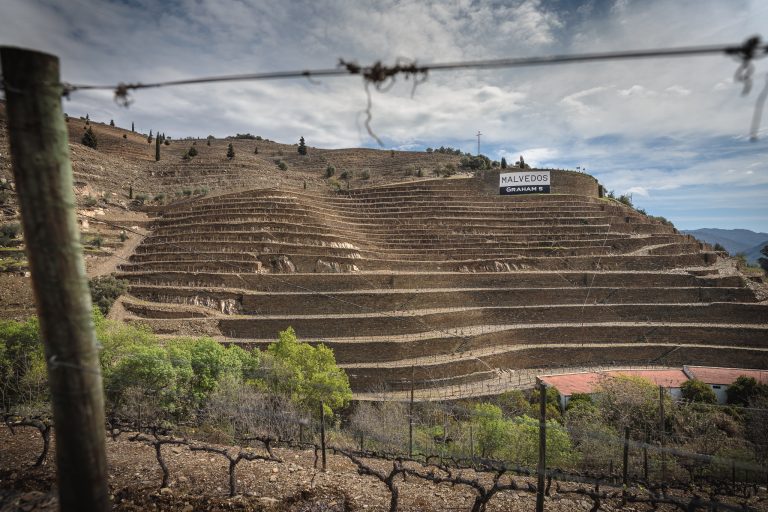Our website uses cookies in order to work correctly and to improve your browsing experience. By browsing this website, you agree to our Cookie Policy.
Erosion Management
One of the biggest challenges facing Douro viticulture is soil erosion. The reality of the topography combined with the weather can wreak havoc in our terraced vineyards. Rainfall can be a mixed blessing. It is usually desperately needed in a region of dryland farming but it can come down suddenly and in great volume (increasingly so as a result of climate change). When this happens, flash floods wash away the topsoil and flow in torrents down the hillsides eroding the topsoil and causing landslides.
The correct laying out of earth-banked terraces (patamares) in the Douro has seen major advances in recent years, using lasers as guides. This technology ensures an ideal inclination on each terrace, slightly canted towards the hillside to allow rainwater to seep into the soil. The terraces are slightly inclined lengthways so that water can run off the ends (rather than over the sides) and be channelled into drainage ditches. Our objective is to find the right balance between retaining sufficient water for the vines and allowing the excess to run-off without damaging the vineyards with erosion and landslides.
One of the most visible effects of climate change in the Douro has been the tendency for rainfall to increasingly come down in short, sharp bursts, especially during the spring and summer, meaning that much of the desperately needed water ends up in the River Douro rather than in the vineyards. However, it is reassuring to observe that terraces laid out with the new techniques rarely collapse, a testament to the effectiveness of their construction and the drainage systems.



